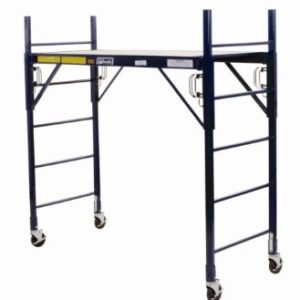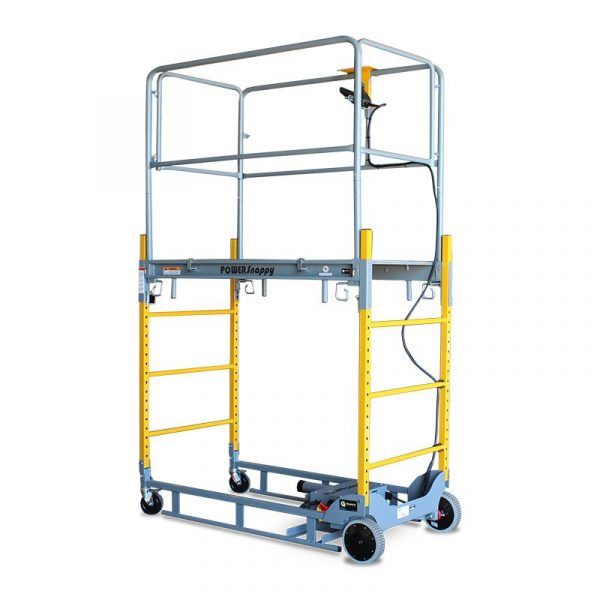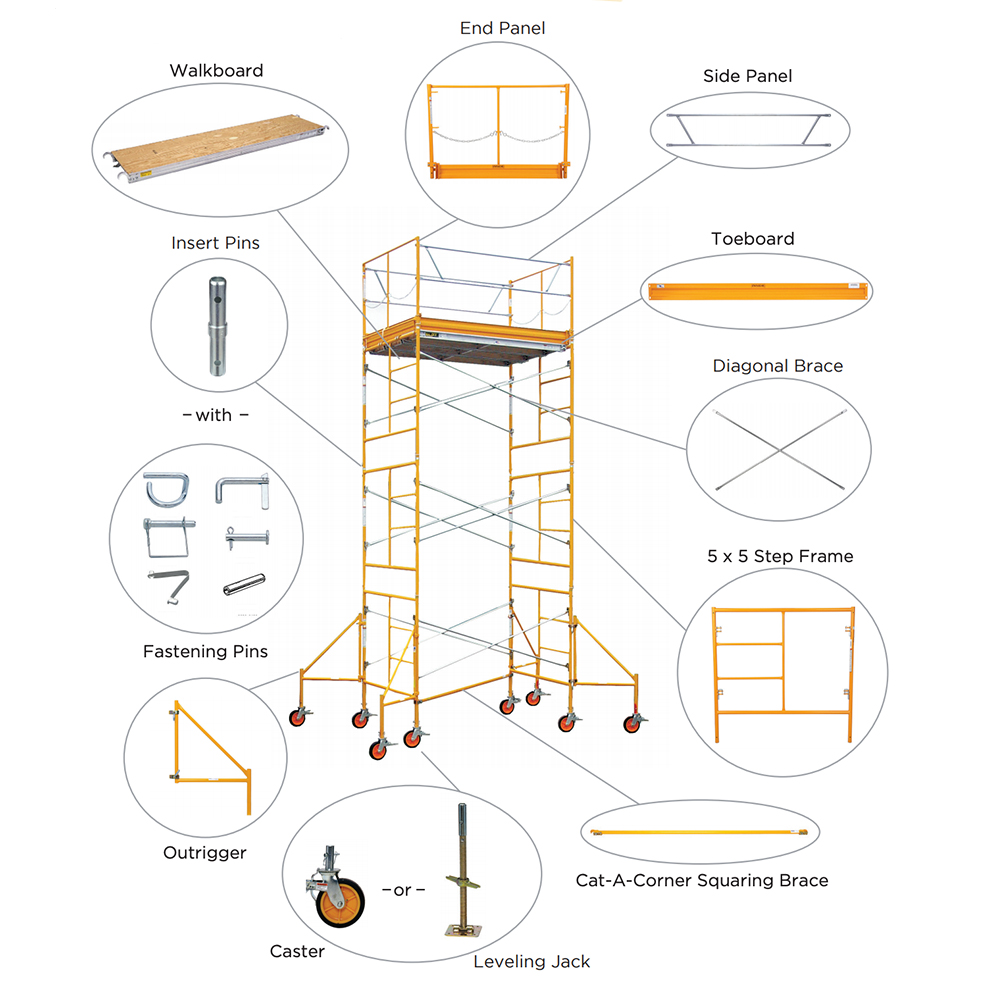Raising to Success: Hoists and Raising Equipment Solutions
The Duty of Scaffolding in Historic Structure Remediation =========================================================
Scaffolding is important in historic structure restoration for comprehensive accessibility, structural stability, and security conformity. Numerous products like steel, aluminum, and wood are made use of, each offering special benefits. Techniques such as steel dental braces and carbon fiber wrapping strengthen the framework. Specialized accessibility services guarantee extensive analysis and fragile repair work. Adhering to precaution and regulations through training and assessments is important. The duty of scaffolding exceeds support, contributing to the conservation of architectural heritage with careful remediation practices. Discover more regarding the significance of scaffolding in historic building remediation by exploring the thorough research searchings for.

Relevance of Historical Structure Restoration
Preserving historic buildings is crucial for safeguarding social heritage and keeping a connection to the past. These buildings hold substantial social worth, standing for the background, traditions, and identity of an area or a country. By restoring historic structures, we assure that future generations can value and learn from the architectural marvels of the past, understanding the advancement of style and building methods gradually.
The social value of historic structures exceeds simply their visual appeal. They act as concrete links to our ancestors, providing understandings right into their way of life, beliefs, and societal structures. Preserving these frameworks assists us honor the craftsmanship and artistry of previous ages while adding to a feeling of connection and identity in a rapidly altering globe.
Furthermore, bring back historic structures is vital for keeping their architectural stability. These frameworks commonly include distinct style aspects, intricate information, and workmanship that may not be replicable today. Maintaining their original kind makes sure that future generations can admire and examine these architectural wonders, appreciating the skill and vision of the craftsmen who built them.
Types of Scaffolding Used
What are the various kinds of scaffolding typically utilized in historic structure repair jobs? Scaffolding plays a crucial role in giving secure gain access to for workers to carry out restoration deal with historical buildings. Different kinds of scaffolding are made use of based upon the details demands of the task. The selection of scaffolding products and modern technology is influenced by aspects such as the height and weight constraints imposed by the historic structure.
Typical sorts of scaffolding materials consist of steel, aluminum, and wood. Steel scaffolding is understood for its strength and longevity, making it appropriate for tasks calling for hefty tons. Light weight aluminum scaffolding is lightweight and corrosion-resistant, optimal for jobs where wheelchair is important. Timber scaffolding, although less usual as a result of safety problems and maintenance needs, can still be made use of for smaller sized reconstruction projects.
Technological innovations have caused the growth of specialized scaffolding systems like tube and clamp scaffolding, framework scaffolding, and suspended scaffolding. These systems supply convenience and effectiveness in maneuvering with complex historical structure structures while sticking to height and weight constraints, making sure the safety and security of employees and the conservation of the structure.
Architectural Assistance and Stability
Making certain structural support and security is critical in historical building restoration projects to guard the integrity of the building throughout the repair procedure. This includes a meticulous approach to evaluating the stability of the framework and applying essential supports to ensure its safety and long life.
Right here are four essential factors to consider in keeping structural support and stability:
Initial Stability Evaluation: Conduct a comprehensive examination of the building's current security to identify locations that need immediate attention and reinforcement.
Structural Reinforcement Methods: Carry out tested methods such as including steel dental braces, carbon fiber covering, or concrete enhancing to strengthen the existing framework and enhance its security. https://camdenscaffolding.co.uk/index.html
Tracking and Change: Continually check the structural honesty during the remediation process, making changes as needed to maintain security and protect against possible threats.
Professional Oversight: Engage architectural designers and reconstruction specialists to supply support and competence in making certain the building's structural stability and adherence to safety and security standards throughout the reconstruction project.
Access for Comprehensive Reconstruction Work

To help with precise remediation work, making sure in-depth access to all locations of the historical building is essential for complete evaluation and preservation initiatives. Comprehensive assessment and detailed fixings usually call for specific accessibility to reach complex details that might be unattainable otherwise.
Historical structures commonly feature fragile architectural elements and unique workmanship that require mindful interest during repair. Specialized access solutions such as customized scaffolding, airborne lifts, or setting up systems are crucial for restoration professionals to browse the complex features of historic structures securely and properly.
Precaution and Laws
Implementing rigid precaution and sticking to regulations are critical in historical structure repair projects to ensure the security of both workers and the building heritage. In these projects, safety training plays a crucial function in making certain that all workers are equipped with the expertise and skills to browse the distinct difficulties positioned by historic buildings.
Routine devices evaluation is additionally crucial to recognize any type of prospective hazards and stop crashes that might lead to damages to the structure or damage to individuals. Below are 4 key precaution and policies to consider:
Safety Training Programs: Conduct thorough safety training programs to educate workers on the certain threats connected with historical building restoration and the methods for mitigating these risks.
Routine Equipment Assessments: Execute a schedule for routine assessments of scaffolding, safety belt, and various other tools to ensure they meet security criteria and remain in great working problem.
Adherence to OSHA Regulations: Purely follow Occupational Security and Health Management (OSHA) regulations to keep a risk-free working environment and stop crashes.
Emergency Feedback Strategies: Create thorough emergency response prepares to deal with any incidents immediately and properly, ensuring the safety of employees and the preservation of the historic building.
Preserving Historical Design
Preservation of historical architecture stands as a fundamental pillar in the preservation of our social heritage and architectural legacy. Historical preservation warranties that substantial structures from the past are kept for future generations to value and pick up from. It involves a delicate equilibrium in between guarding the original honesty of the structures and adapting them to fulfill modern-day demands.
One of the key elements of historic conservation is maintaining building authenticity. This involves preserving the unique qualities and design aspects that define a certain historical period or design.
Architectural credibility is crucial in making sure that the historic significance of a structure is not lost during the preservation process. It requires cautious research and attention to detail to properly recover and conserve historical frameworks. By maintaining architectural credibility, we can safeguard the historical value of these buildings and offer a concrete link to the past for existing and future generations to experience.
Inevitably, historic conservation plays an important duty in maintaining our cultural identity and heritage for years to find.
Regularly Asked Inquiries
Exactly How Do Historic Building Remediation Projects Impact the Resident Area and Economy?
Historic building reconstruction projects play an essential duty in area involvement by maintaining regional heritage, fostering a sense of satisfaction, and drawing in tourism. Economically, such endeavors generate jobs, increase residential property values, and promote neighborhood organizations.
What Are Some Common Obstacles Encountered Throughout Historical Structure Repair Jobs That Are Not Associated with Scaffolding?
Obstacles in historical structure restoration projects, omitting scaffolding, encompass delicate preservation techniques, budget plan restrictions, regulatory hurdles, and experienced labor lacks. Balancing authenticity with modern needs, discovering a means via elaborate authorizations, and ensuring structural stability are essential obstacles faced.
Are There Any Certain Rules or Standards That Deal With the Preservation of Historical Structure Materials During Restoration?
Conservation strategies play a vital function in historic structure remediation, ensuring the preservation of initial materials. Certain guidelines and standards mandate the cautious preservation of historical structure products during restoration jobs to preserve credibility and social value.
Exactly How Do Historical Structure Remediation Tasks Include Modern Innovation and Strategies to Ensure Long-Term Conservation?
Integrating innovative preservation approaches and lasting products in historical building remediation jobs is important for making certain long-term preservation. By embracing modern technology and strategies, these tasks can enhance structural integrity while preserving the historic credibility of the buildings.
What Duty Do Neighborhood Historic Societies or Organizations Play in the Planning and Execution of Historic Structure Remediation Projects?
Neighborhood involvement is essential in historic structure reconstruction projects. Neighborhood historical societies and organizations contribute knowledge, financing, and campaigning for. They assure preservation techniques straighten with historic importance, fostering a sense of ownership and pride in the neighborhood.
Final thought
To summarize, scaffolding plays an essential duty in historical structure repair by giving architectural support, accessibility for in-depth repair work, and ensuring precaution and policies are complied with.
By using different kinds of scaffolding, historic design can be protected and preserved for future generations to appreciate and take pleasure in.

It is crucial that proper care and interest are given to the reconstruction process to safeguard the durability and integrity of these significant historical structures.